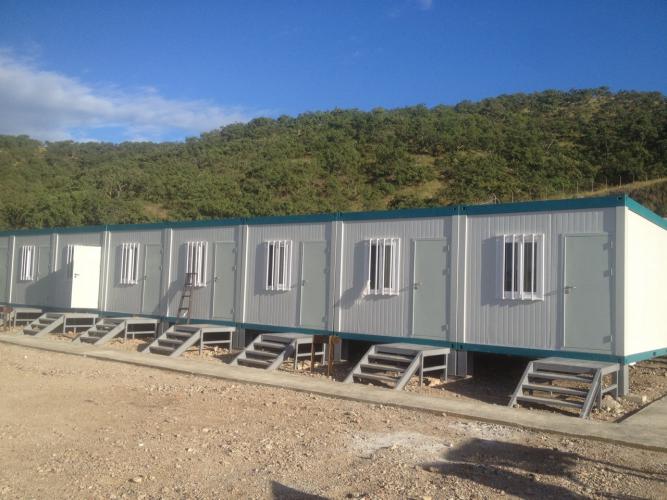
The Promise That Doesn't Add Up
The marketing pitch is compelling and sounds almost too good to be true. Sustainable modular construction vendors present a solution that claims to deliver the best of both worlds: cost savings of 20-30% combined with environmental benefits. They promise 90% waste reduction, 40% lower carbon emissions, and construction timelines that are 50-70% faster than traditional building methods.
It sounds like the future of construction. In theory, it should be a no-brainer for any developer serious about both sustainability and profitability.
But developers and project managers who actually explore this option discover something jarring: The upfront capital requirement is 30-50% higher than traditional green construction. Banks are hesitant to finance these projects, offering lower loan-to-value ratios and higher interest rates. And the promised "faster timeline" evaporates when you encounter fragmented building codes across different jurisdictions, each demanding separate certifications and approvals.
This is the green building paradox: A solution marketed as cost-effective and sustainable actually requires more upfront capital, faces financing skepticism, and encounters greater regulatory complexity than the traditional alternatives it claims to replace.
This article breaks down where this paradox originates, reveals the actual cost mathematics, explains why financing sustainable modular construction is unexpectedly difficult, and provides a framework to help you determine whether it's actually the right choice for your project.
Section 1: The Promise vs. The Reality—Where the Paradox Begins
What the Marketing Actually Says
Vendor presentations typically highlight impressive metrics:
Construction costs 20-30% lower than site-built
Material waste reduced by 90%
Carbon footprint reduced by 40%
Construction timeline compressed by 50-70%
Factory quality control eliminates on-site rework
Modular design allows for future expansion and adaptation
These claims aren't false. They're accurate—under specific conditions that rarely materialize in real projects.
The Hidden Costs Nobody Mentions
What gets glossed over in vendor presentations:
Advanced Material Procurement: Factory-based production requires material orders months before construction begins. In modular systems, you must commit to entire material packages (steel, insulation, windows, fixtures) in advance. Any price fluctuations between order and delivery are your risk. During periods of inflation or supply chain disruption, advance material procurement can add 8-15% to project costs.
Green Certification Compliance: Achieving LEED, BREEAM, or similar certifications adds cost at multiple stages—design certification, material verification, commissioning, and final assessment. These certifications can add $50,000-$200,000 to a typical project, and the market premium for certified buildings is often only 5-10%, meaning the certification itself becomes a net cost rather than an investment.
Regulatory Approval Costs: Different jurisdictions have different requirements for modular buildings. Some classify them as "temporary structures" requiring different engineering standards. Some require factory inspections. Others demand local assembly inspections. Each jurisdiction's unique requirements means design modifications, additional documentation, engineering review—adding 2-6 months to permitting timelines and $30,000-$100,000 in additional costs.
Financing Premiums: The banking industry is conservative about factory-built construction. Lenders typically offer lower loan-to-value ratios (70-75% instead of 80-85%) and charge 1-3% higher interest rates for modular projects due to perceived risk. For a $10 million project, this financing premium adds $100,000-$300,000 to total project cost.
Where the Math Diverges: Real Project Examples
Project A: 200-Unit Worker Housing in Australia
Vendor promised cost: $1,850/m²
Upfront capital required before production: $5.2M (60% of total project cost)
Actual initial cost: $2,180/m² (17.8% higher than promised)
Main culprits: Advance material procurement ($180/m²), regulatory compliance ($120/m²), financing premium ($30/m²)
Project B: Green Office Complex in North America
Vendor promised cost: $2,100/m²
Financing challenge forced 18-month delay while securing alternative funding
Final cost when completed: $2,640/m² (25.7% above initial estimate)
The delay alone increased interest costs by $340,000
Project C: Sustainable Housing Development in Southeast Asia
Vendor promised cost: $900/m²
Regulatory fragmentation across three provinces required design modifications
Three separate certification processes required
Final cost: $1,245/m² (38.3% above estimate)
The regulatory complexity completely eliminated the promised cost advantage
Section 2: Capital Intensity—The Financing Problem Nobody Discusses
Why Factory-Based Production Demands Upfront Cash
Traditional site-built construction follows a predictable payment timeline:
Weeks 1-4: Site preparation, foundation work (10-15% of project cost)
Weeks 5-12: Structural work (20-25% of project cost)
Weeks 13-20: Systems installation (30-35% of project cost)
Weeks 21-28: Finishing (20-25% of project cost)
Payment follows work completion. Lenders can advance funds as construction progresses.
Sustainable modular construction inverts this timeline:
Months 1: Design finalization and regulatory approval
Months 2-3: Material procurement and advance payment (50-70% of project cost due immediately)
Months 4-8: Factory production (slow cash burn as modules are built)
Months 9-10: Transportation and on-site assembly (20-30% of project cost)
Months 11-12: Finishing (remaining costs)
The Cash Flow Crisis: Paying Before Production
The critical difference: You must commit 50-70% of project capital months before any modules arrive on-site. Traditional construction allows progressive funding based on completed work. Modular construction requires faith-based upfront capital commitment.
For a $20 million project:
Modular approach: $12-14M due in months 2-3
Traditional approach: $10M due in months 1-4 (spread across foundation, structure, systems)
The modular approach compresses the capital requirement into a shorter timeframe, requiring either:
Larger credit lines (more expensive)
Project finance structures (more complex, higher fees)
Construction loans covering 100% instead of 80% (rare and expensive)
Developer equity injection (reduces available capital for other projects)
How Upfront Requirements Eliminate Development Options
This capital structure creates a natural selection mechanism:
Large institutional developers: Have access to corporate capital, project finance, and favorable lending terms. They can absorb upfront capital requirements. Result: Modular construction makes sense at scale.
Mid-size developers: Often work on projects with thinner margins and limited access to corporate capital. The upfront capital requirement makes modular less attractive. Result: They choose site-built or conventional prefab.
Small developers: Cannot access upfront capital for modular projects. Result: Systematic exclusion from sustainable modular construction market.
This creates an ironic outcome: A method promoted as a solution to housing affordability inadvertently becomes accessible only to large capital-intensive developers, potentially making the affordability problem worse.
Section 3: Why Banks Won't Finance What They Don't Understand
The Perception Problem: Factory-Built vs. Site-Built
Lending institutions are conservative. They underwrite based on historical performance data, comparable properties, and understood risk profiles. For factory-built construction, the data is incomplete.
Most lenders have:
Incomplete performance history: 20 years of modular building data exists, but it's fragmented across manufacturers, regions, and building types
Uncertainty about end-of-life value: What is a 30-year-old modular building worth? What is its actual lifespan? Can it be redeployed or must it be demolished?
Unfamiliarity with long-term economics: Modular buildings have different maintenance profiles and operational costs than site-built, and lenders often don't have reliable data to model these differences
Regulatory uncertainty: Building code acceptance varies regionally; lenders worry about stranded assets in jurisdictions where codes shift
The Financing Penalty: Lower LTV, Higher Rates
These uncertainties translate into financial penalties:
Loan-to-Value Ratios:
Traditional green construction: 80-85% LTV
Sustainable modular: 70-75% LTV
Developer impact: On a $20M project, must provide additional $2-3M equity instead of debt
Interest Rates:
Traditional construction: Prime + 150-200 bps
Modular construction: Prime + 250-350 bps
Developer impact: 1-2% higher interest rate adds $100,000-$400,000 to a $20M project
Loan Terms:
Traditional construction: 10-12 year amortization typical
Modular construction: 7-8 year amortization (reflecting lender caution)
Developer impact: Higher annual debt service, tighter annual cash flow projections
Case Study: Two Identical 50-Unit Projects
Project A (Site-Built):
Project B (Modular):
Construction cost: $10M (same building)
Financing: $7.5M at 8% for 8 years (different terms due to modular classification)
Total interest cost: $1.8M (different amortization, but higher rate captures lender caution)
Higher rate reflects risk premium for unfamiliar construction method
Shorter amortization requires annual debt service of $1.15M vs. $1.03M for site-built
Additional capital required: $1M more equity (lower LTV)
Net additional cost: $350,000-$500,000 over loan life
This $350K-$500K cost difference is a pure penalty for choosing modular construction, regardless of actual construction quality or risk.
The Performance Data Gap
Lenders want proven track records. For sustainable modular construction, the track record is:
Sufficient to show it works: 20+ years of demonstrated performance globally
Insufficient to quantify long-term economics: Most modular buildings are 10-20 years old; 30-40 year track records are limited
Regional variation: A modular building in a dry climate has proven durability; one in coastal salt spray has limited data
Lenders typically require 25-30 year performance data for comparable construction types. Modular construction is approaching this threshold but hasn't reached it universally. Until 30-40 year data is abundant across diverse climates and building types, financing premiums will persist.
Section 4: Green Certification Costs—Investing in a Label That Doesn't Always Pay
What Certifications Actually Cost
LEED Certification:
Design phase review: $5,000-$15,000
Material certification and verification: $30,000-$100,000
Construction phase compliance: $20,000-$50,000
Commissioning and final assessment: $15,000-$40,000
Total LEED cost: $70,000-$205,000
BREEAM Certification:
Initial assessment: $10,000-$30,000
Design stage certification: $20,000-$60,000
Post-construction verification: $30,000-$80,000
Total BREEAM cost: $60,000-$170,000
Carbon Footprint Certification:
Baseline assessment: $5,000-$15,000
Material carbon tracking: $10,000-$30,000
Verification and certification: $5,000-$20,000
Total carbon footprint cost: $20,000-$65,000
For a typical $10M modular project, sustainable certifications add $100,000-$250,000 in additional costs—1-2.5% of total project cost.
The Sustainability Premium Myth
The assumption: Green certifications create market premium, allowing developers to charge more or achieve faster sales.
The reality: Green premiums are inconsistent and often insufficient to offset certification costs.
Market Premium by Region:
Developed Markets (North America, Western Europe, Australia):
New construction premium for LEED: 5-15%
Modular construction discount: -10-20% (perception/uncertainty)
Net effect: Potential 5-10% premium offset by modular discount = 0-5% actual premium
Cost to achieve: $150,000-$250,000
Breakeven: Requires $3-10M additional value, achievable only on large projects
Developing Markets (Asia, Africa, Latin America):
New construction premium for green certification: 0-5%
Modular construction discount: -10-15%
Net effect: Negative premium (-10-15%)
Cost to achieve: $100,000-$200,000
Economic logic: Certification adds cost with negative return
Case Study: 100-Unit Housing Development in Brazil
Developer achieved LEED Gold certification:
Certification costs: $180,000
Expected market premium: 5-10%
Actual market response: +2% (minimal differentiation in local market)
Additional revenue from premium: $50,000-$100,000
Net cost of certification: $80,000-$130,000
The certification was technically successful but economically irrational for this specific project in this specific market.
The Certification ROI Question
When does green certification make financial sense?
Positive ROI scenarios:
Institutional real estate investment (long hold, ESG-mandated allocation = premium pricing)
Trophy properties in major markets (Manhattan, London, Sydney where green commands 10-15% premiums)
Resale properties (corporate buyers increasingly mandate green certifications)
Publicly-traded developers (market rewards ESG credentials, increasing stock valuations)
Neutral/Negative ROI scenarios:
Speculative development with quick sale (no time to recoup premium, no strategic buyer benefits)
Regional markets with weak green premium (most of Asia, Africa, developing regions)
Industrial/warehouse facilities (minimal green premium regardless of certification)
Projects in oversupplied markets (certification doesn't overcome supply-demand imbalance)
The paradox: Sustainable modular construction is promoted as an eco-friendly solution, yet the financial math often makes certifications economically irrational, creating a perverse incentive to skip certification despite the project's inherent sustainability.
Section 5: The Regulatory Fragmentation Tax—A Hidden Cost in Every Project
Why "Fast Deployment" Isn't Fast When Regulations Vary
Modular construction's primary advantage is speed: 50-70% reduction in on-site construction time. A project that requires 12 months of traditional construction takes 4-6 months of modular assembly.
But this speed advantage only materializes if permitting and approval timelines are compressed equivalently. They often aren't.
State-by-State Certification Chaos
In the United States, building codes are primarily state and local jurisdiction responsibilities. This creates a fragmented landscape:
States with established modular building codes:
California, Florida, Texas, New York, Michigan
Pre-established standards for modular buildings
Predictable permitting timelines: 6-12 weeks
Factory certification portable across jurisdictions: Yes
States without established modular building codes:
Requires individual engineer review
Building inspector discretion on code compliance
Permitting timelines: 12-20 weeks (unpredictable)
Factory certification from another state: May not be accepted
International jurisdictions:
European Union: Accepts CE-marked modular buildings (standardized)
Most other countries: Individual jurisdiction review required
Permitting timelines: 12-40 weeks (highly variable)
Container House Classification Chaos
An example of regulatory absurdity: Container-based modular buildings face contradictory classifications:
Country A: Classifies containers as "temporary structures" requiring temporary permits, building expiration dates (conflict with permanent housing intent)
Country B: Requires reinforced structural engineering certification for container conversion
Country C: Prohibits container buildings entirely in urban zones
Country D: Accepts container buildings under residential code if structural certification provided
A single container module design requires 4 different regulatory approaches depending on jurisdiction—each with different engineering specifications, documentation requirements, and permitting fees.
Permitting Timeline Case Study: 500-Unit Worker Camp
Client: Oil & Gas Company
Locations: Alberta (Canada), Saudi Arabia, Nigeria
Same modular design. Different regulatory paths:
Alberta, Canada:
Pre-established modular codes
Permitting timeline: 8 weeks
Regulatory costs: $30,000
Timeline impact: Minimal
Saudi Arabia:
No established modular codes
Individual engineering review required
Permitting timeline: 18-24 weeks
Regulatory costs: $120,000
Timeline impact: +16 weeks, eliminating speed advantage
Nigeria:
No established modular codes
Permitting process unclear, frequent clarifications required
Permitting timeline: 24-32 weeks
Regulatory costs: $150,000
Timeline impact: +24 weeks, speed advantage reversed
Project implications:
Single global design: Impossible without regional modifications
Centralized factory production: Compromised (factory must hold inventory waiting for regulatory approvals)
Cost: Original estimate $50M becomes $50.2M (low impact)
Timeline: Original estimate 12 months becomes 16-18 months (speed advantage eliminated)
The Regulatory Fragmentation Tax
Costs of dealing with fragmented regulations:
Design modifications for specific jurisdictions: +$50,000-$300,000
Multiple regulatory consultants: +$20,000-$80,000
Engineering review/re-certification: +$30,000-$150,000
Permitting delays (additional financing costs): +$50,000-$500,000
Total regulatory fragmentation tax: $150,000-$1M+ per project
For projects in single jurisdictions with established modular codes, this tax is minimal. For international or multi-jurisdictional projects, regulatory fragmentation can completely eliminate modular construction's speed and cost advantages.
Section 6: Supply Chain Vulnerabilities vs. Green Logistics Promises
The Paradox: Promoting Low-Carbon Logistics While Shipping Heavy Modules
Sustainable modular construction marketing emphasizes reduced carbon emissions. Yet the typical supply chain requires:
Global sourcing of components (steel, insulation, fixtures, windows)
Long-distance trucking or ocean shipping of finished modules
Heavy-duty transportation equipment (not efficient for single-unit moves)
Specialized handling and delivery (additional fuel consumption)
A 40-foot modular unit weighing 10-15 tons requires:
Specialized truck (1 unit per truck, not optimizable)
Potential long-distance transport (500-5,000+ km)
Often requires pilot vehicles/escort in jurisdictions with oversized load regulations
Carbon emissions for transportation alone: 2-5 metric tons CO₂ per module
Transportation Carbon Cost:
A 200-unit modular project = 200 × 3.5 tons CO₂ = 700 tons CO₂ from transportation. Marketing claims about "40% carbon reduction" often don't adequately account for this transportation carbon footprint.
Global Supply Chain Dependencies
Factories serving the sustainable modular market typically source materials globally:
Steel: Europe, China, India
Insulation: North America, Europe
Windows/doors: Europe, China
HVAC systems: China, Japan
Electrical/plumbing: Global suppliers
Any disruption in any supply chain creates cascading delays:
2022 example: Container shortage + steel supply constraints delayed 30% of modular projects globally
2023 example: Chinese port congestion created 6-week delays for modules shipped to Europe/Australia
2024 example: Tariffs on imported materials increased material costs 15-25% for modular projects
Supply chain delays directly impair modular construction's primary advantage (speed), adding:
Project delays: 4-24 weeks additional timeline
Financing costs: $50,000-$500,000 additional interest
Labor costs: Personnel held on standby during delays
Morale/performance: Delayed projects often experience quality degradation
Damage During Transport
Modules are vulnerable during transport:
Roof/wall panels can be dented or damaged
Mechanical systems (HVAC, plumbing) can be jarred loose
Windows/doors can crack
Internal fixtures can shift or break
Damage rates: 5-15% of shipments sustain some damage, 1-3% sustain serious damage requiring return/rework.
Cost implications:
Repair/replacement: $5,000-$50,000 per damaged unit
Timeline delay: 2-8 weeks for replacement modules
Rework on-site: Quality degradation, labor cost overruns
Section 7: Standardization vs. True Sustainability—When Customization Breaks the Economics
Why Economies of Scale Require Standardization
Modular construction's cost advantage derives from standardization:
Standardized module sizes fit into containers optimally (no wasted space)
Standardized designs leverage shared engineering and certification
Standardized production runs create factory efficiency
Standardized component packages reduce inventory management
A manufacturer producing 100 identical 3×6m modules achieves per-unit cost of $X. Producing 100 different custom modules costs 2-3X per unit because:
Unique engineering for each design: $5,000-$20,000 per module
Setup/teardown costs amortized over fewer units: +10-20% per unit
Inventory management complexity: +5-10% per unit
Factory scheduling inefficiency: +15-25% per unit
Logistics optimization failure: +20-40% per unit (custom sizes don't pack efficiently)
When Customization Becomes Necessary
True sustainability often requires customization:
Climate adaptation: A modular building designed for dry inland climate isn't optimized for coastal salt spray or tropical humidity. Achieving performance in diverse climates requires:
Different wall/roof insulation levels
Different sealing/drainage strategies
Different ventilation systems
Different materials (salt-resistant coatings, etc.)
Local material integration: Sustainability best practices emphasize local sourcing to minimize transport. But modular factories typically serve wide geographic areas, making local sourcing difficult. Customization for local materials requires:
Supply chain modifications
Engineering modifications
Factory production modifications
Operational customization: Different end-users have different operational needs (occupant preferences, amenity levels, flexibility requirements), requiring:
Different interior layouts
Different mechanical systems
Different technological integration
The Cost Multiplier Effect
Each customization multiplies costs:
Baseline standardized modular unit: $25,000
Customization 1 (climate adaptation): +$5,000 (20% increase)
Customization 2 (local materials): +$4,000 (16% increase)
Customization 3 (operational preferences): +$3,000 (12% increase)
Customization 4 (different sizing): +$6,000 (24% increase)
Total: $25K + $18K = $43,000 (72% price increase)
But the real cost isn't additive—it's multiplicative due to factory inefficiency. A module with 4 customizations costs 2.5-3× the standardized version, not 1.72×.
Realistic customized cost: $25,000 × 2.5 = $62,500 (150% increase)
At this cost level, customized modular becomes competitive with site-built construction—eliminating the cost advantage that justified choosing modular in the first place.
Real Project Example: Customized Modular in Australia
Client: Mining company needing accommodation at remote site with extreme heat, occasional cyclones, and water scarcity
Standardized modular unit: $28,000/unit (base price)
Customizations required:
Enhanced insulation for extreme heat: +$6,000
Cyclone-resistant structural reinforcement: +$5,000
Rainwater harvesting integration: +$4,000
Different sizing to fit site constraints: +$8,000
Expected cost (linear): $51,000
Actual cost (due to factory inefficiency): $72,000
Additional costs due to customization inefficiency: $21,000 per unit
For 100-unit project: $2.1M additional cost beyond baseline
This $2.1M is the "penalty" for adapting the modular solution to the actual environmental and operational requirements of the project.
Section 8: The Real Cost of Ownership—Total Cost Analysis Over 20 Years
Comparing Total Costs, Not Just Construction Costs
A fair financial comparison requires 20-30 year analysis, not just construction phase.
Scenario 1: 100-Unit Housing Development
Modular Approach:
Construction phase:
Material & module cost: $2.8M
Transportation: $400K
Assembly labor: $300K
Regulatory/certification: $150K
Financing premium (1% higher rate on $3M average balance): $180K
Contingency: $170K
Total construction cost: $4M
Operational phase (20 years):
Annual maintenance: $8K × 20 = $160K
Financing costs (8% on $3M at 8 years amort.): $1.9M
Major repairs (year 12): $250K
Certification renewal (every 5 years): $120K
Total operational cost: $2.43M
Total 20-year cost: $6.43M ($64,300 per unit)
Site-Built Approach:
Construction phase:
Direct construction cost: $4M (no modular premium)
Regulatory compliance: $80K
Financing premium (lower rate—85% LTV at 6.5%): $1.7M interest
Contingency: $200K
Total construction cost: $5.98M
Operational phase (20 years):
Annual maintenance: $6K × 20 = $120K (lower than modular)
Financing costs already included above
Major repairs (year 15): $300K
Total operational cost: $420K
Total 20-year cost: $6.4M ($64,000 per unit)
Conclusion: Nearly identical 20-year costs. Modular shows slight advantage ($300/unit) due to lower operational maintenance, offset by higher financing and certification costs.
Scenario 2: Temporary Worker Camp (5-Year Timeline)
Modular Approach:
Construction cost: $4M
Financing (5-year term): $800K interest
Operational (5 years): $80K
Total 5-year cost: $4.88M
Cost per unit-year: $97,600
Site-Built Approach:
Construction cost: $5.98M (not optimized for temporary)
Financing (5-year term): $600K interest
Operational (5 years): $120K
Demolition/disposition: $200K
Total 5-year cost: $6.9M
Cost per unit-year: $138,000
Conclusion: Modular saves $2M (29%) for 5-year temporary use. Superior choice.
Scenario 3: International Project in High-Regulatory-Complexity Environment
Modular Approach:
Construction cost: $4M
Regulatory fragmentation costs: $500K (permitting delays, design modifications)
Financing premium: $250K
Supply chain delays (additional 6 months of financing): $300K
Financing costs: $1.9M
Operational (20 years): $2.43M
Total 20-year cost: $9.38M ($93,800/unit)
Site-Built Approach:
Construction cost: $5.98M
Regulatory compliance (established standards): $100K
Financing costs: $1.7M
Operational (20 years): $420K
Total 20-year cost: $8.2M ($82,000/unit)
Conclusion: Site-built cheaper by $1.18M (12%) due to regulatory complexity eliminating modular's advantages.
Key Insights from Cost Analysis
Modular advantages disappear over 20+ years: Higher financing costs and regulatory premiums compound, offsetting construction-phase savings.
Temporary use favors modular: 5-10 year timelines show 15-30% cost savings.
Permanent use favors site-built: 30+ year operational lives often favor site-built due to better long-term financing terms and stable operational costs.
Regulatory environment is determinant: Locations with complex regulatory environments see modular advantages shrink or disappear.
Standardization critical: Customized requirements frequently eliminate modular cost advantages entirely.
Section 9: When Sustainable Modular Construction DOES Make Financial Sense
Not all projects are created equal. Sustainable modular excels in specific contexts.
High-Volume, Standardized Projects (100+ identical units)
Projects with identical or near-identical modules achieve maximum economies of scale:
Mining camps: 200+ identical worker units
Emergency housing: Standardized disaster relief shelters
Developer-built housing: Tract housing with limited customization
Characteristic: Modular cost advantage: 15-25%
Example: A 300-unit standardized housing project in a jurisdiction with established modular codes, where units require minimal customization, will achieve promised cost savings.
Temporary Facilities with 5-10 Year Timeline
Modular shines when you plan to redeploy or remove units:
Construction project camps
Disaster relief housing
Temporary industrial facilities
Research stations in remote locations
Characteristic: Modular cost advantage: 25-40% for temporary timelines
Why: Ability to relocate infrastructure, vs. demolition costs for site-built, creates 25-40% savings over 5-10 year horizon.
Locations with Established Modular Building Codes
Jurisdictions with standardized modular building regulations:
California, Florida, Texas, parts of Canada, Northern Europe
Predictable permitting timelines
Factory certifications portable across regions
Characteristic: Eliminates 2-6 month permitting delays, saves $100K-$500K in regulatory costs
Developers with Access to Favorable Modular Financing
Some financing sources specialize in modular construction:
Green project bonds (often lower rates for certified sustainable projects)
Development finance institutions (lower cost capital for modular)
Institutional investors with long hold timelines (accept lower near-term returns for long-term value)
Characteristic: Can neutralize the 1-2% financing penalty, making modular competitive
Long-Operational-Life Projects (30-50 Years)
Over very long timelines, modular's higher upfront efficiency compounds:
Institutional buildings (hospitals, universities, government facilities)
Long-term rental housing
Facilities with 50+ year operational plans
Characteristic: Modular's operational efficiency advantage (faster replacement cycles, flexibility) compounds over time
These scenarios represent 20-30% of modular construction opportunities. They're where modular genuinely delivers promised advantages.
Section 10: Decision Framework—Is Sustainable Modular Right for Your Project?
Ask These 10 Questions Before Committing
Question 1: What is your realistic project timeline?
If 5-10 years: Modular likely makes sense
If 15-30 years: Modular requires careful analysis
If 30+ years: Site-built often superior
Question 2: What is your location's regulatory environment for modular buildings?
Research:
Does your jurisdiction have established modular building codes?
How are modular buildings classified in local regulations?
What is the typical permitting timeline for modular buildings in your area?
Established codes + predictable permitting: Modular friendly
No established codes + uncertain permitting: Expect 4-6 month delays and $200K-$500K additional costs
Question 3: Are your project requirements standardized or highly customized?
Standardized (90%+ identical units): Modular economics work
Partially customized (70-80% standardized): Modular still viable
Highly customized (each building different): Site-built often superior
Question 4: What is your access to project financing?
Corporate balance sheet or green bonds: Financing costs not a major factor; modular more viable
Traditional bank loans: Accept 1-2% financing premium for modular
Limited financing access: The higher upfront capital requirement makes modular problematic
Question 5: Is green certification essential for your project economics?
Question 6: If international, how many jurisdictions are involved?
Single jurisdiction: Modular likely works
2-3 jurisdictions: Expect regulatory complexity costs; verify modular still economical
4+ jurisdictions: Regulatory fragmentation likely eliminates modular's advantages
Question 7: What is your expected inflation rate for the project?
Modular requires front-loaded material procurement → sensitive to inflation
Site-built spreads costs over time → inflation impact distributed
High inflation environment: Modular carries additional risk
Question 8: What is your climate/environmental context?
Mild climate, stable environment: Modular works well
Extreme climate (hurricane, typhoon, seismic zones): Modular requires expensive customization
Coastal/corrosive environment: Higher maintenance costs diminish modular advantages
Dry, stable climate: Modular economics best
Question 9: How important is speed to your project success?
Speed critical (construction delays = major cost/revenue impact): Modular beneficial
Speed not critical (delays manageable): Financing premium makes site-built competitive
Speed not critical + regulatory complexity: Site-built likely superior
Question 10: What is the actual total cost of ownership over your full operational timeline?
Build financial model assuming realistic costs (including upfront capital, financing premiums, regulatory complexity)
Compare modular total cost vs. site-built total cost
Modular should show 10-20% savings to justify choosing it over familiar site-built approaches
Financial Modeling Template: Calculate Your True Cost of Ownership
Construction Phase:
Direct construction: [Enter $]
Regulatory/certification: [Enter $]
Financing costs: [Enter $]
Contingency (15%): [Enter $]
Total construction cost: [Calculated]
Operational Phase (annual × operating years):
Maintenance: [Enter $ per year]
Major repairs (frequency): [Enter $ and frequency]
Operational financing costs: [Enter $ per year]
Total operating cost: [Calculated]
Total Cost of Ownership:
Compare this modular TCO to site-built TCO using identical operational assumptions. Modular makes sense if total 20-30 year cost is 10-20% lower.
Conclusion: Understanding the Paradox
Sustainable modular construction isn't inherently good or bad. It's a different approach with different economics. The paradox exists because:
✓ Factory-based production moves costs forward, requiring upfront capital investment months before production begins, while traditional construction distributes costs progressively
✓ Green certifications add cost without guaranteed market premium, creating situations where sustainability investments exceed market returns
✓ Regulatory fragmentation creates uncertainty and delay, eliminating the speed advantage that justifies modular's complexity and upfront costs
✓ Supply chains create hidden environmental and financial costs, contradicting sustainability promises while adding schedule risk
✓ Customization destroys economies of scale, making bespoke modular solutions cost-prohibitive compared to site-built
✓ Market perception hasn't caught up to reality, leading to financing penalties that reflect lender uncertainty rather than actual risk
Before committing to sustainable modular construction, understand that you're not choosing between a cheap solution and an expensive one. You're choosing between different cost timing, different risk profiles, and different regulatory complexity.
The "best" choice depends on:
Your specific project timeline
Your location's regulatory environment
Your access to financing and capital
Your project's degree of standardization
Your climate and environmental context
For temporary projects in standardized configurations within predictable regulatory environments: Sustainable modular delivers on its promises and offers 20-40% cost advantages.
For permanent housing in complex regulatory environments with customized requirements: Traditional site-built or site-optimized construction often proves more economical.
For long-term institutional facilities with stable capital structures: Modular's flexibility and operational efficiency can justify higher upfront costs.
The vendors understand these trade-offs. They'll emphasize scenarios where modular excels while downplaying complexity in scenarios where it struggles.
Your job is to understand the complete picture—to see both the genuine advantages and the hidden costs—so you can make an informed decision about whether sustainable modular construction is actually the right choice for your specific project, in your specific context, on your specific timeline.
The paradox isn't a marketing conspiracy or a fundamental flaw in modular construction. It's simply the result of choosing a more complex, upfront-capital-intensive approach and expecting it to behave like a simple, progressive-cost approach. Understanding this distinction is the key to making modular construction work for you—or knowing when to choose something else.



More

More
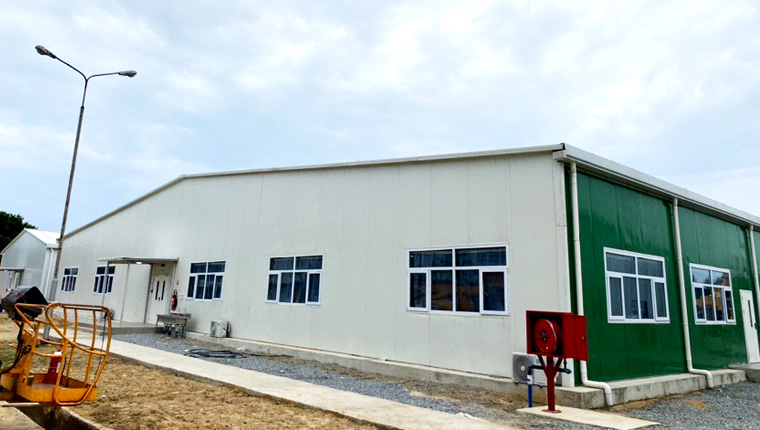
More
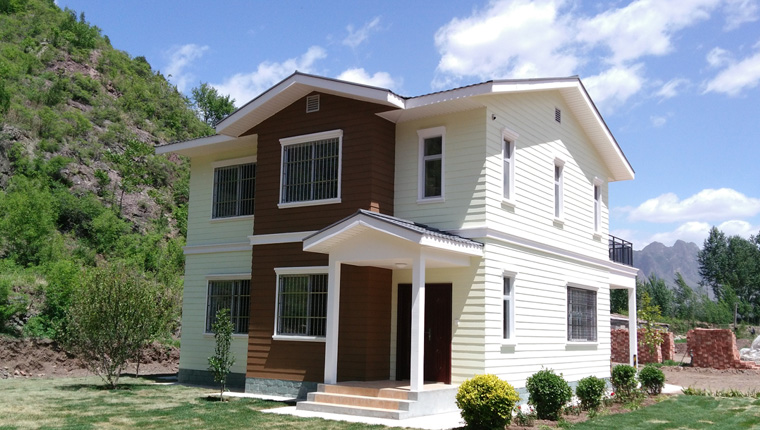
More
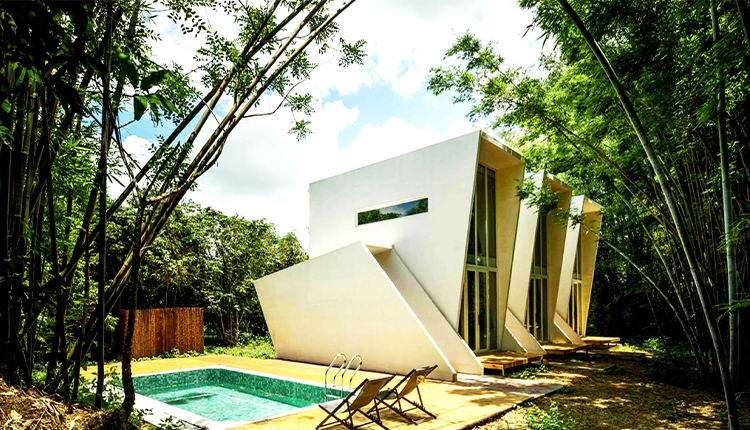
More
Learn More
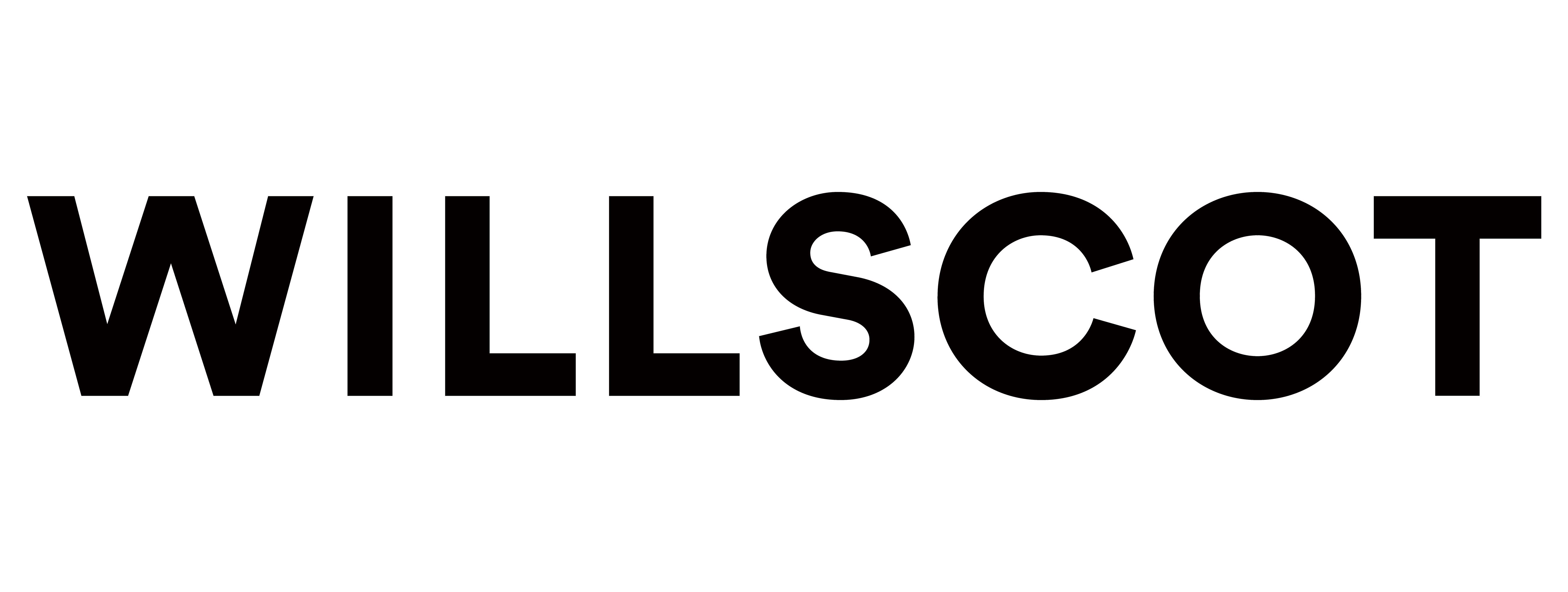

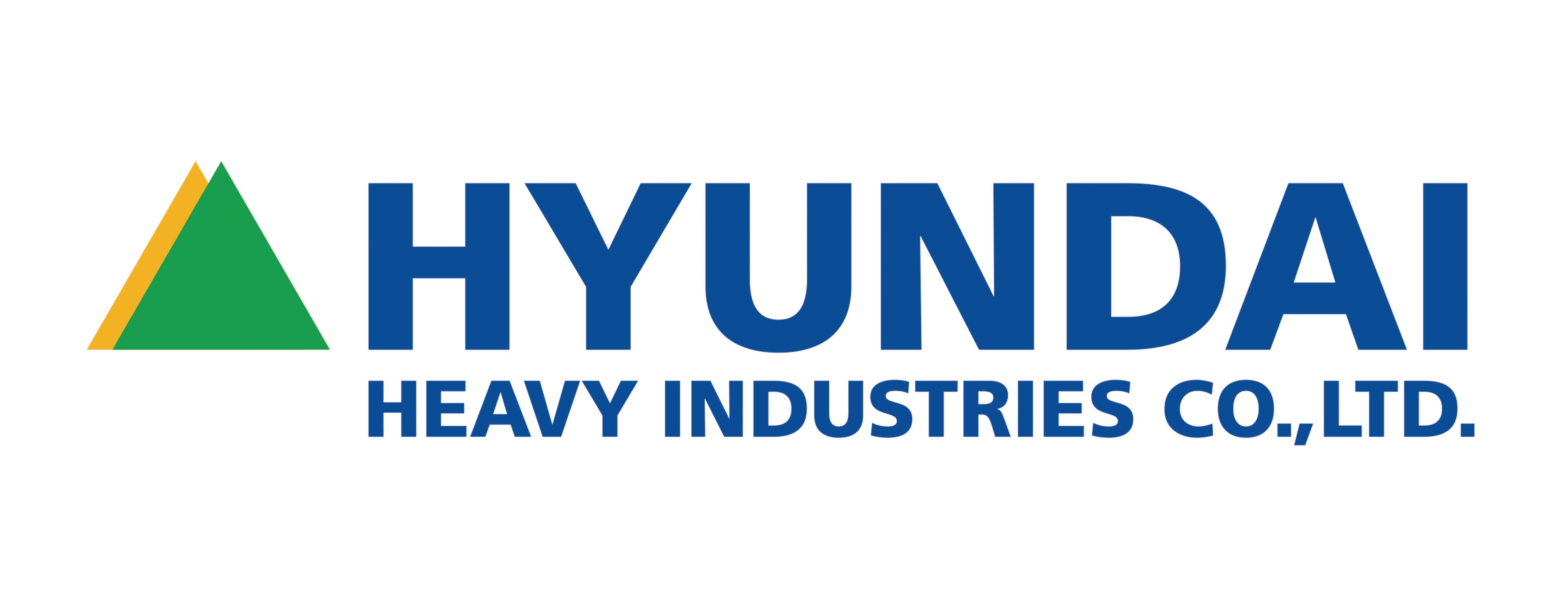
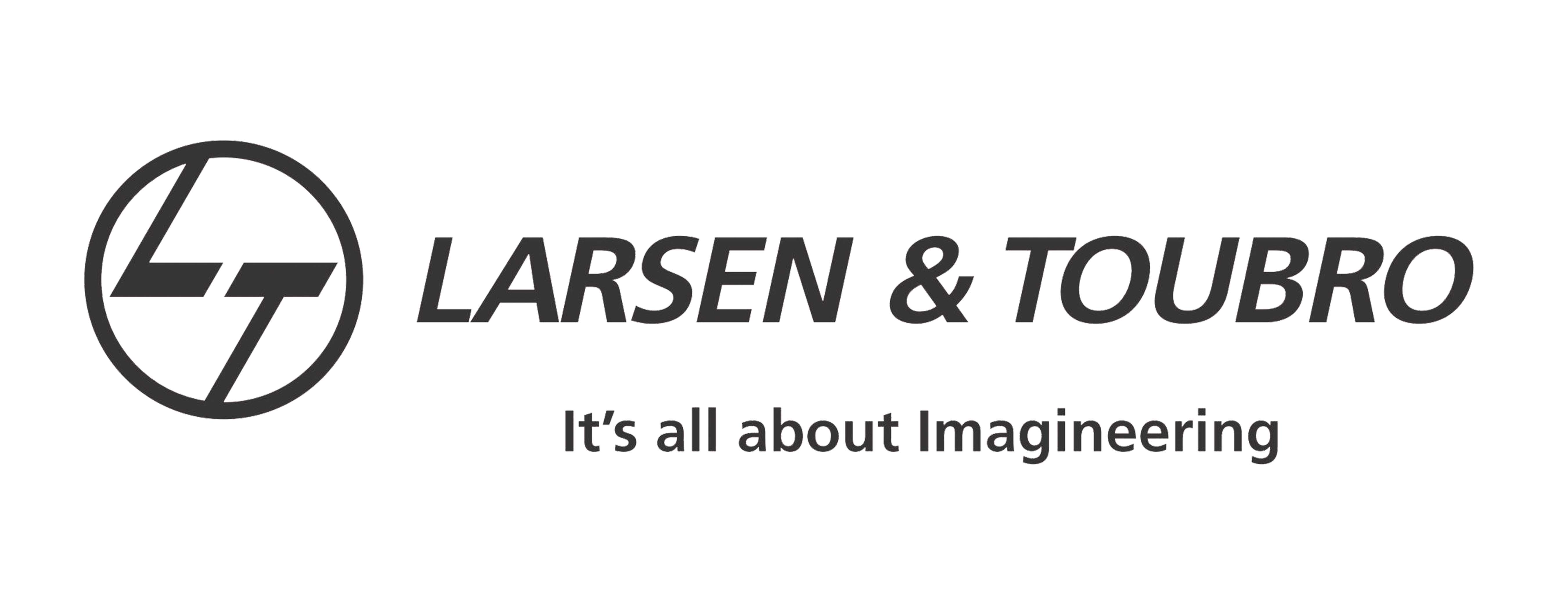






















![Top Advantages of Modular Construction Explained [2025]](/uploads/upload/images/20250424/0fb390068474145a09a8c0504c73b1d2.png)
